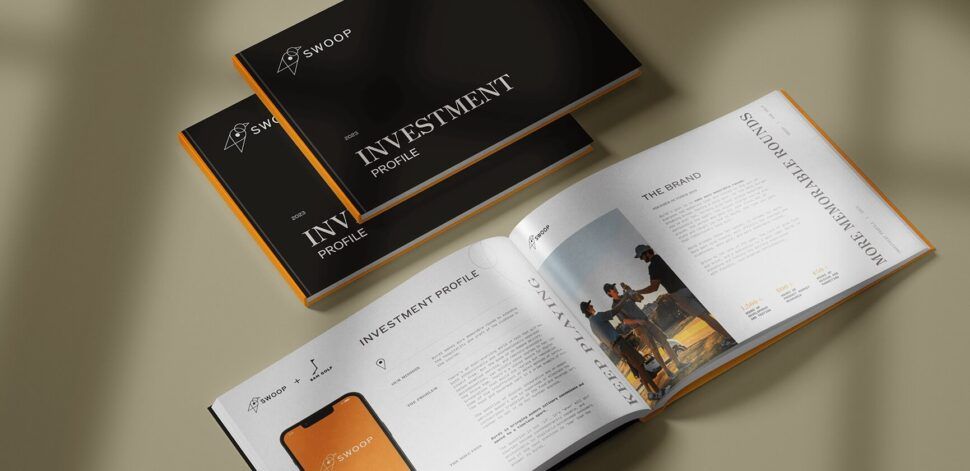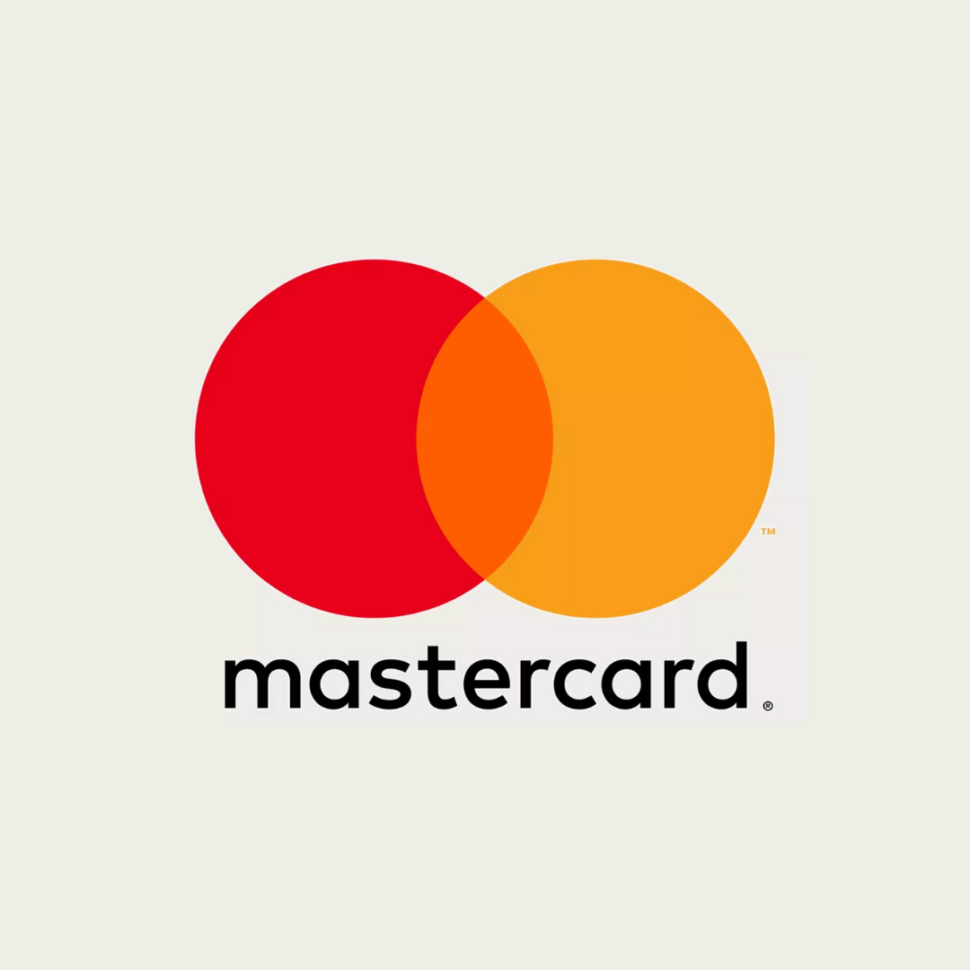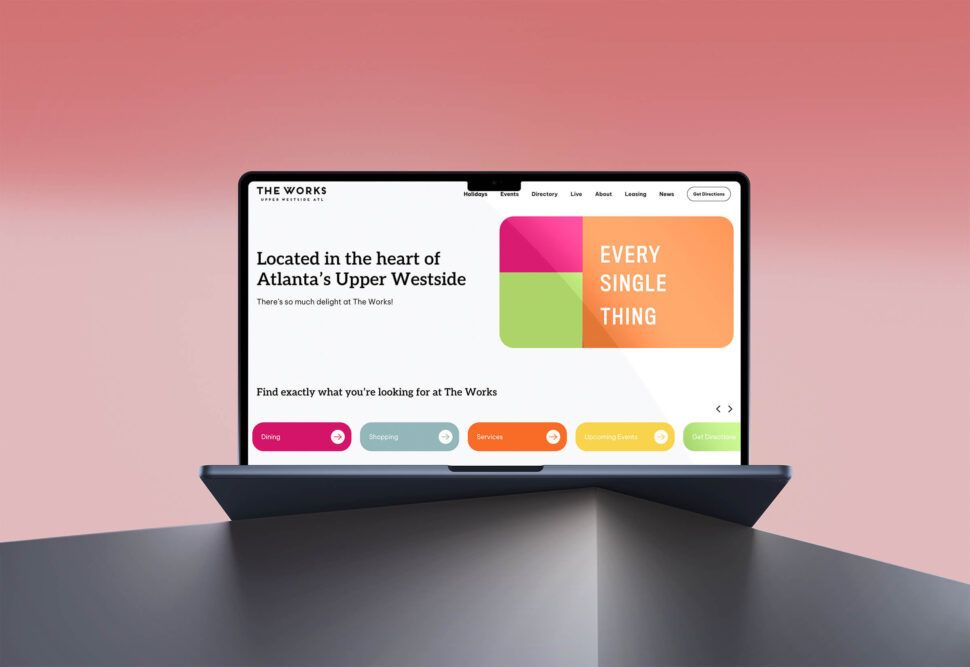
5 Signs Your Brand Needs a Complete Redesign
Your brand might need a complete redesign if it’s struggling to connect with customers or keep up with market trends. Here are five key warning signs to watch for:
- Outdated Visual Identity: Old logos, colors, or fonts can make your business look out of touch and untrustworthy. Modern design trends like responsive logos, bold fonts, and versatile color schemes are now essential.
- Inconsistent Messaging: Mixed tones or conflicting messages across platforms confuse customers and weaken trust. Unified messaging builds recognition and credibility.
- Dropping Engagement: Low likes, shares, or comments on your content could mean your brand no longer resonates with your audience. Staying aligned with current preferences is critical.
- Targeting a New Audience: Expanding into new markets, launching new products, or shifting direction may require your brand identity to match your updated goals.
- Reputation Issues: Negative feedback or declining customer loyalty signals trust problems. A redesign, paired with real improvements, can help rebuild confidence.
If these challenges sound familiar, it might be time to rethink your brand. A redesign can help modernize your image, clarify your message, and rebuild stronger connections with customers.
Building a Brand – Redesigning a Business Start to Finish
1. Your Visual Identity Looks Outdated
Your logo, colors, and fonts are the first things people notice about your brand. If these elements feel outdated, they can make your business seem unreliable or disconnected from today’s customers.
But visual identity isn’t just about aesthetics – it’s a reflection of your brand’s personality, values, and professionalism. When your design feels stuck in the past, it risks turning potential customers away. And as you’ll see in the next sections, this issue can lead to even bigger challenges.
The Risks of Dated Design
An outdated look sends the wrong message. If your logo feels old-fashioned or your website design looks like it hasn’t been updated in years, people might wonder if your products or services are just as behind the times.
A stale design can hurt your credibility. Customers often associate clean, modern branding with quality and forward-thinking. If your competitors have sleek, updated visuals while your brand looks unchanged, you’re giving them a clear edge.
This is especially problematic in competitive fields. Imagine a law firm with an outdated website – it might lose potential clients who assume the firm isn’t up to speed with current legal standards. Or think about a tech startup with a dated logo – it could struggle to attract investors who expect innovation and cutting-edge ideas.
Your visual identity touches everything: social media, websites, mobile apps, and ads. If it doesn’t meet today’s standards – like mobile optimization or responsive design – it reinforces the perception that your business isn’t keeping up.
Current Design Trends in the U.S.
In today’s market, modern brands in the U.S. lean toward minimalist layouts, bold sans-serif fonts, and muted, sophisticated color palettes. These choices make designs clearer and more accessible.
Responsive design is no longer optional – it’s a must. Your logo and branding need to look sharp and functional everywhere, whether on a billboard, a business card, or a smartphone screen. A simple, versatile logo is key, working just as well at tiny sizes as it does when blown up.
Authentic visuals are also gaining traction. Staged or generic stock images are being replaced by real photography and custom illustrations. Younger audiences, in particular, can spot inauthentic visuals a mile away – and they don’t respond well to them.
Another shift is the growing popularity of dark mode on apps and websites. This trend has pushed brands to design visual identities that look great on both light and dark backgrounds, requiring smarter color and contrast choices.
Accessibility is now a standard consideration in design. High-contrast colors, screen reader compatibility, and inclusive design elements aren’t just nice-to-haves – they’re expected. Learn more about Ada Compliance.
These trends reflect broader shifts in U.S. consumer values. People want brands that feel real, simple, and inclusive. Ignoring these preferences can make your brand seem disconnected.
The goal isn’t to chase every design trend but to strike a balance – modern and professional, yet distinct enough to stand out in your industry.
2. Your Messaging Is Inconsistent Across Platforms
Imagine this: your brand posts something casual and fun on Instagram, but when customers visit your website, they’re met with stiff, corporate language. Then, they receive an email from you with a completely different tone. This kind of inconsistency doesn’t just confuse people – it makes them question if they’re even dealing with the same company. Worse, they might start doubting whether your business knows what it’s doing. Mixed messaging like this doesn’t just weaken trust; it chips away at your brand’s identity.
And it’s not just about tone. Inconsistencies can show up in visuals, core messages, or even how you describe your products or services. When these elements don’t align, customers notice. Just as outdated or mismatched visuals can make your brand look unprofessional, fragmented messaging can make your audience lose confidence in you.
Signs of Messaging Problems
One big red flag? Inconsistent tone. For example, your LinkedIn posts sound formal and professional, but your TikTok content is packed with slang. While it’s normal to adjust slightly for different audiences, drastic shifts in tone can make your brand feel scattered and unreliable.
Then there’s the issue of a changing core message or tagline. If your website promises one thing, your social media highlights something else, and your print materials focus on a completely different benefit, customers are left wondering: What does this brand actually stand for?
Even within your company, messaging problems can arise. For instance, your sales team might promote certain product features while your marketing team focuses on completely different ones. This kind of internal disconnect becomes glaringly obvious to customers who interact with multiple departments.
Another warning sign is when your brand seems to have conflicting personalities. Maybe your website feels polished and professional, your social media is playful and cheeky, and your email newsletters come across as overly serious. These mixed signals make it hard for customers to form a clear idea of who you are.
Finally, your messaging might not even match your audience. For example, your social media campaigns might target younger demographics, while your traditional advertising appeals to older generations. This creates confusion about who your brand is actually meant for. To avoid these pitfalls, your messaging needs to be consistent across all platforms, reflecting a unified voice and mission.
Benefits of Unified Branding
When your messaging is consistent, customers recognize and trust your brand more quickly. Seeing the same tone, visuals, and core messages across platforms reassures them that your brand is reliable and professional.
A unified approach also simplifies your marketing efforts. With one strong, adaptable voice, your campaigns become more efficient, saving time and ensuring all your efforts are aligned toward the same goals.
Consistency doesn’t just benefit your audience – it enhances the entire customer experience. Whether someone interacts with your social media, visits your website, or walks into your store, they should feel like they’re dealing with the same company. This seamless experience builds loyalty and makes customers more likely to recommend you to others.
Internally, clear and consistent branding empowers your team. When everyone – from sales to customer service – understands your brand’s voice and values, they can confidently create content, answer questions, and represent your company in a way that feels authentic and aligned.
From a business perspective, consistent branding often leads to better results. Recognition improves, customer acquisition costs drop, and customer lifetime value increases. Why? Because people trust and stick with brands that they understand.
The solution? Develop detailed brand guidelines. These should go beyond just visuals to include tone, messaging priorities, and core values. When done right, these guidelines ensure that anyone on your team can create content that feels like a natural extension of your brand, no matter the platform or context.
3. Your Audience Engagement Is Dropping
When your audience stops interacting – fewer likes, comments, or shares – it’s a clear sign that the connection between your brand and its followers is weakening. Let’s dive into what this means and how to recognize the warning signs.
A drop in engagement often points to a disconnect between your brand’s offerings and what your audience values. Consumer preferences shift quickly, and identifying these changes early gives you the chance to rebuild that connection through a thoughtful brand refresh.
Warning Signs of Declining Engagement
In today’s digital world, even a small dip in engagement can snowball. Social media algorithms thrive on interaction, so when your posts see fewer likes, shares, or comments, they’re less likely to appear in feeds – further shrinking your reach. It’s a cycle that can be hard to break if left unaddressed.
Staying Aligned with Consumer Trends
The U.S. market evolves rapidly, and what appealed to your audience just a couple of years ago may now feel outdated. With rising competition and ever-changing digital platforms, staying relevant requires constant adaptation.
Visual content is non-negotiable. With 80% of online users skimming content, grabbing attention quickly is critical. Visuals play a huge role here: adding images to text posts can increase a person’s desire to read by 80%, and Facebook posts with visuals earn 2.3% more engagement than text-only posts.
Authenticity matters more than ever. Consumers – especially millennials – prioritize authenticity. In fact, 91% of people across generations prefer to buy from brands they perceive as genuine. If your messaging feels overly corporate or disconnected from real customer experiences, your audience will notice – and they might look elsewhere.
Brand recognition takes more effort now. On average, it takes 5–7 impressions for someone to remember a brand, a number that continues to rise as people consume information faster than ever. Consistent branding across all platforms can boost visibility, with unified brands being 3–4 times more likely to stand out.
Interactive content boosts engagement. Formats like contests or polls can improve conversions by 34%. Trying out interactive approaches is a great way to re-engage your audience and spark renewed interest.
Sometimes, a full brand overhaul is the only way to realign your visual identity, messaging, and customer experience with today’s market demands. A modern, authentic, and consistent brand presence across all channels naturally encourages engagement. Brands that adapt to changing trends stay relevant, while those that resist risk falling behind.
4. You're Targeting a New Audience or Changing Direction
As your business grows and evolves, your brand must keep pace. Expanding into new markets, rolling out different products, or shifting your business model can leave your current brand identity feeling out of sync with your goals. This disconnect can alienate potential customers and stunt growth. Let’s explore why this misalignment signals it’s time for a redesign.
Your brand should represent who you are now – not who you used to be. What appeals to one audience often falls flat with another.
When Your Brand Feels Outdated
Entering new market segments can expose limitations in your existing brand. For example, a B2B software company transitioning to consumer markets needs to rework its branding to focus on simplicity and emotional appeal, which resonate more with individual consumers.
Shifts in audience demographics can also create challenges. If your core customer base has aged or you’re attracting a younger audience, your brand’s tone and visuals might feel out of touch. A look and voice that appealed to Baby Boomers decades ago likely won’t resonate with Gen Z today.
Adding new product lines can complicate your brand identity. A company known for budget-friendly products that introduces a premium range has to strike a balance – maintaining its reputation for value while signaling sophistication. Branding that screams affordability can undermine credibility in the high-end market.
Expanding geographically within the U.S. brings its own hurdles. A brand that clicks with urban Northeast customers might not appeal to rural Southern audiences, where regional preferences and cultural nuances play a significant role in shaping perceptions.
Adapting to U.S. Market Diversity
The diversity of the U.S. market makes it clear why a one-size-fits-all brand often falls short.
The American market demands customized branding to connect with its varied audiences. For example, generational differences shape how people interact with brands. Millennials and Gen Z often value social responsibility and authenticity, while older generations may lean toward professionalism and reliability.
Regional differences also matter. West Coast consumers often favor innovation and environmental awareness, while Midwest markets might emphasize practicality and affordability. In the South, brands that highlight community and personal connections tend to resonate more.
Income levels further complicate branding. A company targeting both middle-class families and high-income professionals must walk a fine line. This might mean creating sub-brands or flexible branding systems that can cater to both groups without alienating either.
Cultural nuances are essential when appealing to diverse communities. Hispanic, Asian American, African American, and other groups have unique preferences and cultural touchpoints. Brands that succeed in these spaces invest in research to understand these differences rather than assuming a universal approach will work.
If your efforts to expand into new markets aren’t delivering results, or if focus groups reveal confusion about your brand’s identity, it might be time to rethink your branding. A well-executed redesign can help you connect with your audience and unlock new growth opportunities.
5. Your Brand Has Reputation Problems
A damaged reputation can shake even the most established brands, impacting customer sentiment, reducing sales, and weakening loyalty. Just like outdated visuals or inconsistent messaging, reputation issues can undermine every interaction customers have with your brand.
Unlike other branding challenges that evolve over time, reputation problems can appear suddenly and demand immediate attention. In such cases, a brand redesign can serve as a powerful way to signal change and begin restoring trust.
Spotting Reputation Problems
One of the first signs of trouble is declining customer engagement and loyalty. If customers are no longer interacting with your brand and retention rates are dropping, it may point to deeper trust issues.
Another red flag is negative public sentiment. A rise in poor online reviews, critical social media mentions, and negative feedback can quickly spiral, creating a snowball effect. A low Net Promoter Score is particularly concerning – it suggests not only dissatisfaction but that customers may be actively steering others away from your brand.
Negative media coverage can amplify these challenges. When your brand consistently appears in unflattering news stories or press reports, it signals that public opinion is turning against you, even among those who haven’t interacted with your brand directly.
These issues often lead to stagnating or declining sales and market share. As consumers lose confidence, they naturally gravitate toward competitors, connecting reputation problems directly to financial losses.
In today’s digital world, these challenges are magnified. Social media posts, online reviews, and news articles can spread negative impressions instantly and globally. Recognizing these warning signs early is key to addressing the problem before it worsens.
Using Redesign to Rebuild Trust
Once reputation issues are identified, a bold brand redesign can help reset public perception. However, this redesign must go beyond surface-level changes. It should be paired with meaningful improvements in your business practices.
A redesign works best when it communicates real progress – whether it’s new policies, leadership changes, or other tangible steps that show your commitment to doing better. Timing also matters: launching a redesign too soon can come across as a distraction, while waiting too long risks allowing negative perceptions to solidify.
Transparency is critical. Acknowledge past mistakes and clearly outline the steps you’re taking to fix them. This honesty can rebuild credibility and reassure customers that your efforts are genuine.
Finally, ensure any changes are consistently implemented across all customer touchpoints. A redesign can open the door to new opportunities, but lasting trust depends on visible, sustained improvements. By combining a refreshed brand identity with authentic actions, you can align your brand with today’s expectations for accountability and reliability.
Conclusion: Starting an Effective Redesign Process
The five warning signs we’ve discussed – outdated visuals, inconsistent messaging, declining engagement, audience misalignment, and reputation challenges – are clear indicators that your brand might be due for a refresh. Recognizing these red flags is the first step toward making meaningful changes. The key is to act now, as delaying action only makes the process more complex and the issues harder to resolve.
A well-thought-out redesign can do more than just update your look. It has the power to strengthen customer relationships, sharpen your market position, and even unlock new revenue opportunities. But this isn’t just about making things “look good.” A successful redesign digs deep, addressing the heart of your brand’s challenges with precision and strategy.
This is where working with experts, like the team at Visual Soldiers, can make all the difference. They bring the expertise needed to create a redesign that integrates a cohesive visual identity, an intuitive user experience, and messaging that resonates with your audience.
Investing in a professional brand overhaul often pays off by boosting customer perception, increasing engagement, and helping your business stand out in a crowded marketplace. Companies that take proactive steps to address branding issues set themselves up for long-term success.
Take a hard look at your brand. If these warning signs feel familiar, it’s time to consult experienced branding professionals. Your brand’s future growth depends on the decisions you make today.
Ready to redefine your brand?
Partner with Visual Soldiers to build a modern identity that connects, inspires, and drives real growth.
Book a Brand Discovery CallFAQs
If your brand’s visual identity feels outdated, there are a few clear signs to watch for. An unresponsive or overly intricate logo, visuals that lack consistency across different platforms, or designs that no longer click with your audience are all red flags. Additionally, if your branding seems stuck in an old design trend or blends too much with your competitors, it might be time to rethink your approach.
To give your brand a modern edge, aim for a cohesive and refreshed design that meets the expectations of today’s audience. Start by simplifying and refining your logo, updating your color scheme, and ensuring a unified look across all channels. A well-executed redesign can make your brand more noticeable and help you reconnect with both loyal fans and potential new customers.
Maintaining consistent messaging begins with a clear and well-crafted brand identity and story. This acts as the backbone of all your communications, ensuring your message connects seamlessly across various platforms. A comprehensive messaging guide can be a game-changer, helping your team stay aligned by detailing essential components like tone, style, target audience, and key messages.
Equally crucial is consistency in design. Rely on the same visual elements – think colors, fonts, and logos – across every platform to solidify brand recognition. Make it a habit to review your content regularly to confirm it sticks to your guidelines, whether it’s for social media posts, email campaigns, or your website. This unified approach not only reinforces trust but also strengthens your brand’s visibility and impact.
A brand redesign can be a powerful way to rebuild trust and re-engage your audience. It shows that your business is evolving and committed to staying relevant. By refreshing your visuals, messaging, and overall identity, you can signal a new chapter – one that aligns more closely with what your customers expect today.
It’s also a chance to refine how you communicate your brand’s values. Fixing outdated or inconsistent elements can help create a more unified and genuine identity. This clarity not only strengthens your credibility but also deepens the connection with your audience.








